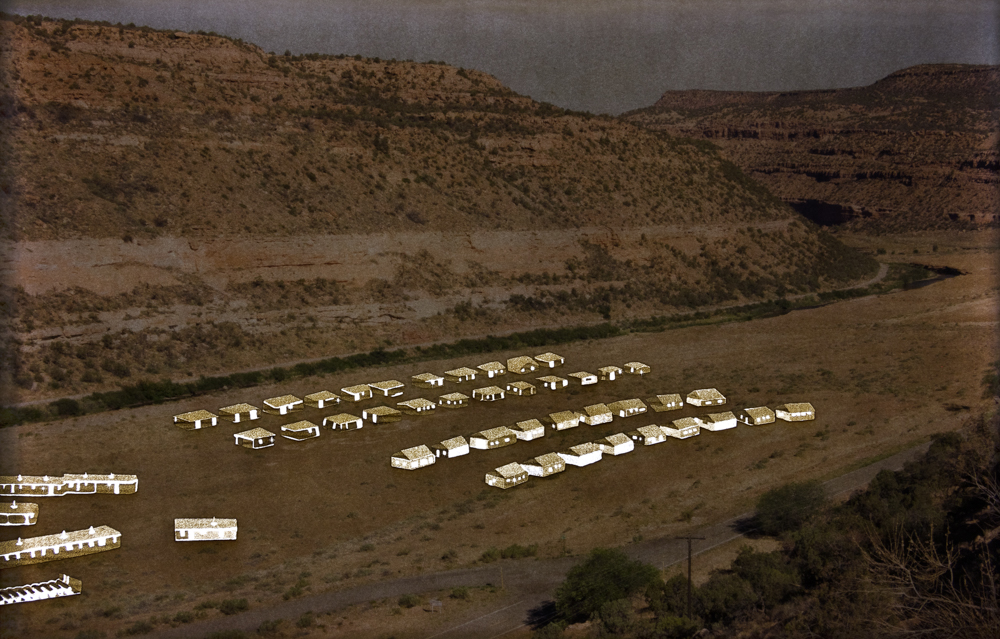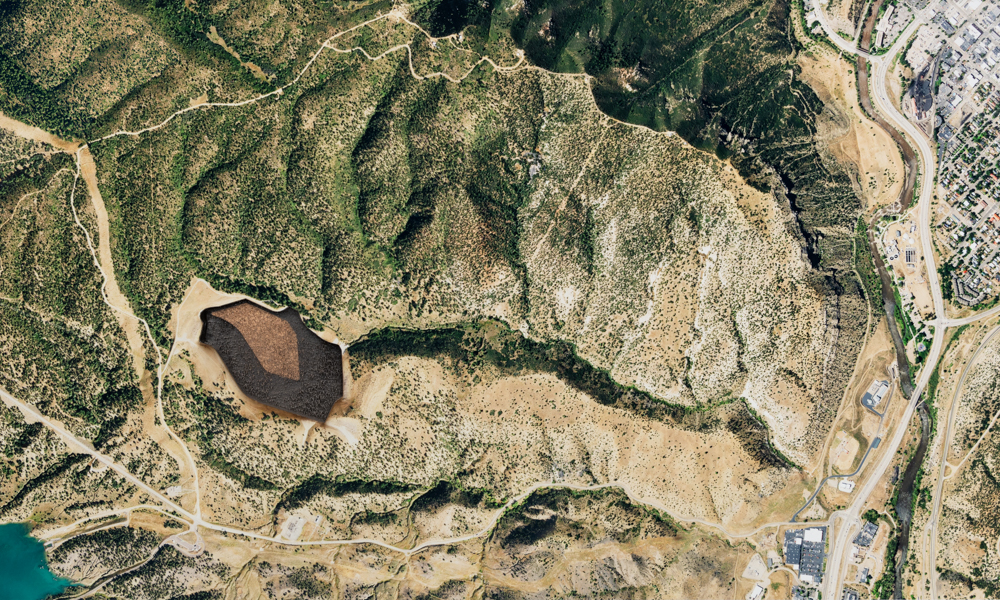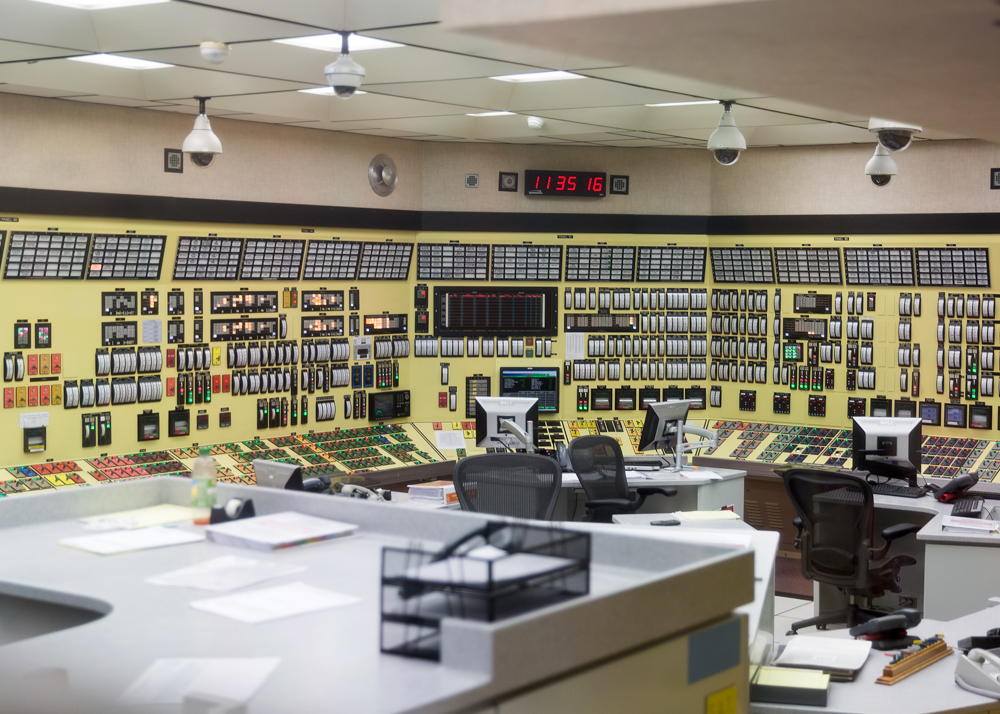L-R: TRANSURANIC, uranotypes (uranium prints), 13”x 9”, 2014, “Columbia Generating Station, Hanford, Washington, radioactive waste shipped to WIPP: 1,336,919 gallons” / CONTROL ROOM, archival pigment prints, 2015, “House with a View”.
Changing her photographic technique or method between sections, she masterfully and effectively communicates direct and indirect content. Pastoral, sweeping, formal landscapes are lush and beautifully presented as archival pigment prints and video stills in section 6, “Scars on Landscape.” In other sections she presents maps of sites and radioactive waste transport lines, or aerial images of uranium disposal cells.
In section 5 entitled “Transuranic,” Hepner presents a series of uranotypes. Of the process she writes that, “[Uranotypes are] an obsolete nineteenth-century photographic process that uses uranium instead of silver to form the image; uranium is an element used to make nuclear bombs and is the basic fuel for nuclear power reactors. The series documents nuclear facilities from an outsider’s perspective. The red and yellow hue of the uranotypes is likened to the color of the sky after the bomb was dropped on Hiroshima, and the material presence negates the unassuming and banal nature of these sites, reminding us of the reality ever present in the images and in the places we inhabit.”












